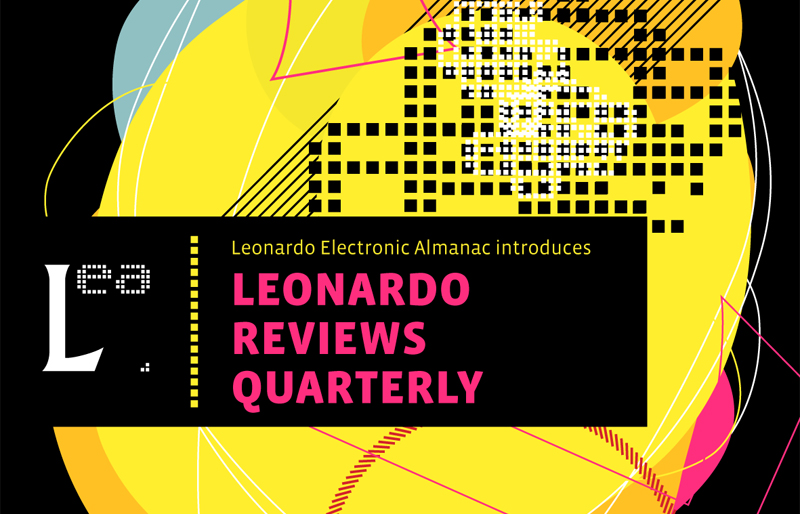
XLIIIrd AICA CONGRESS
The Relations between Art and Science: Complicity, Criticality, Knowledge
AICA 1949 – 2009
Dublin Castle, Dublin, Ireland
26-31 October, 2009
Congress website: Aica Congress
Reviewed by Ellen K. Levy
Artist and Visiting Scholar
NYU
Many would challenge the premise of AICA’s 2009 Congress that “Art and Science has become firmly rooted across artistic disciplines.” The visibility of projects sponsored by innovative programs like the Wellcome Trust and Artists-in-Labs belies its general absence for the public-at-large. Nevertheless this conceit served to propel presenters at the annual AICA Congress beyond an older binary model equating science with objectivity and art with subjectivity. Indeed, as Semir Zeki, a keynote speaker and one of the few scientists present explained, these separate domains are being bridged. Zeki offered the example of linearly correlating subjective aesthetic judgements from beautiful to ugly with measurements of activity of the brain. He viewed the fascination with Francis Bacon’s art (the subject of a large exhibition in Dublin) as partly stemming from the fact that abnormal faces provoke shock; the brain always registers deformed faces as a departure from inherited concepts and does not adapt. Viewing art as a by-product of the knowledge-acquiring system, Zeki offered curiosity as a shared component of the art/sci relationship, reminding us that wonderment was an early impetus that united these fields.
The specific question posed by the conference organizers was how research in the art/science arena has benefited the production of knowledge. The insight to be gained from the conference as a totality was to reinforce the value of reflecting cognitive processes in fundamental and conscious ways in our models of art. Most speakers either explored a particular example of the art/science relationship or discussed the benefits and deficits of past models. To make the point of how art can provide an experiential account of time, Grace Weir (Ireland) included the milking of a cow over a four-minute duration in her video.
Artist and theorist, Suzanne Anker (USA) provided examples of developing ethical concerns related to eugenics in light of new biological capabilities in her keynote talk. She discussed Marc Quinn’s empathetic portrayal of Alison Lapper, born without arms and pregnant at the time. Keynote speaker Carrie Fitzsimmons (USA) spoke about her work with Le Laboratoire and the Science Innovation Prize for Boston youth. Interest in science education and history was shared with Johan Swinnen (Belgium) and Akinwale Onipede (Nigeria), whose talk was presented by Ademola Azeez. He stressed the indispensability of art in the quest for nurturing science in developing countries and movingly quoted John Galbraith’s 1984 talk about the role of arts in Industry.
Examining the features that make biology a potent substrate for art today, Keith Roberts (UK) suggested that we consider whether the art contributes to our understanding of the complexity involved in scientific phenomena, commenting that numerous artists have misrepresented DNA’s handedness. For Liam Kelly (Ireland) the body has achieved significance, readily apparent in discourse on AIDS and in the work of many Irish artists who explore body images. He explored Patrick Ireland’s Portrait of Marcel Duchamp (1966), a cardiogram enshrined through an electric impulse. Greta Berman (USA) presented a talk on behalf of herself and the author, tracing the roots of ‘biologically-attuned’ art prior to 2000 when the first draft of the Genome Project was announced.
Increasing convergence of disciplines and technological advances has propelled
much contemporary art/sci work beyond an appropriation of imagery and into explorations of common processes and methodologies. Susana Sulic (France) examined how art and space sparked a revolution of knowledge as manifested in the early work of Fontana, setting the stage for artists to literally explore outer space.
Many presenters chose to emphasize technology rather than science. Joan Fowler (Ireland) explored process-oriented works by Cornelia Parker, Simon Starling and Pierre Huyghe, contrasting them with the rational procedures that drive science and now define the knowledge economy. Jeannette Unite (S. Africa) presented her moving artwork, Terra, documenting the industrial African Landscape. She rendered the visual power of Congo mining and tunnelling in glass sculpture even acknowledging that these images can be viewed in some sense as exploiting a disappearing landscape. Among those concentrating on technology and ethics were Elaine A. King (USA), Ramon Tio Bellido (France), and Lars Saari (Finland).
The artistic uses of wet-lab and simulation techniques have led to some art achieving the status of ‘evidence’ just as photography had once constituted a new kind of legal proof and was not merely “hearsay of the sun.” [1] Photography was an extended subject of discussion for William Messer and for David Smuckler who discussed how artists arrest loss and dissolution.
Ciaran Benson (Ireland) oversaw the proceedings, which took place over three days. Many presenters implicitly or explicitly asked what art has contributed to science. By contrast with art, science proceeds by way of hypothesis formation, experimentation, and the duplication and verification of results by others. What is clear is that when discussing this hybrid, we must ask: which art? which science?
References
[1] Joel Snyder. 2005, “Res Ipsa Loquitor,” Things that Talk: Object Lessons from Art and Science.
Leonardo Reviews is a scholarly review service published since 1968 by Leonardo,The International Society for the Arts, Sciences, and Technology. Publishers and authors interested in having their print or electronic publications considered for review by the panel should contact Michael Punt, Editor-In-Chief, Leonardo Reviews.
Files:
